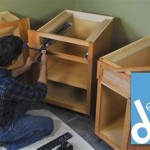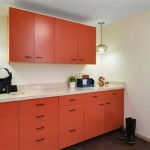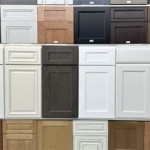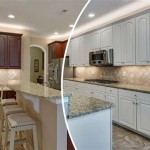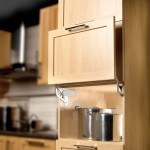How Much Do Stainless Steel Kitchen Cabinets Cost?
Stainless steel kitchen cabinets have gained popularity in both residential and commercial settings due to their durability, hygiene, and modern aesthetic. Determining the cost of stainless steel kitchen cabinets involves a multifaceted evaluation encompassing material grade, construction complexity, customization requirements, installation factors, and regional pricing variations.
Understanding these factors is crucial for homeowners and business owners considering stainless steel as a viable cabinet option. An informed approach enhances the budgeting process and ensures a realistic expectation of the investment required. This article will delve into the various cost elements associated with stainless steel kitchen cabinets, offering a comprehensive guide to navigate the market effectively.
Material Grade and Gauge Influence on Cost
The type of stainless steel used significantly impacts the overall cost of the cabinets. Common grades include 304 and 316 stainless steel. Grade 304 is a widely used austenitic stainless steel containing 18% chromium and 8% nickel. It offers excellent corrosion resistance in most environments, making it suitable for residential kitchens and light commercial applications. Grade 316 stainless steel, conversely, contains molybdenum, which enhances its resistance to chlorides and acids. This makes it a better option for environments with high exposure to corrosive substances, such as coastal areas or commercial kitchens handling harsh chemicals.
Higher grade stainless steel, like 316, is more expensive due to the higher alloy content and enhanced corrosion resistance. While 304 stainless steel may suffice for many residential applications, opting for 316 can provide greater longevity and protection in demanding environments. The added cost should be weighed against the potential for reduced maintenance and replacement costs over the lifespan of the cabinets.
The gauge, or thickness, of the stainless steel also plays a crucial role in determining the price. A lower gauge number indicates a thicker material. Thicker stainless steel provides greater durability, dent resistance, and a more substantial feel. Typically, stainless steel cabinets are constructed using 16-gauge to 20-gauge stainless steel. 16-gauge is thicker and more robust, offering superior strength and impact resistance. It is preferred for high-traffic areas and commercial kitchens where durability is paramount.
20-gauge stainless steel is thinner and more economical. While still durable, it is more susceptible to dents and warping compared to 16-gauge. It is generally suitable for residential kitchens or light-duty commercial applications where the risk of impact is lower. The cost differential between 16-gauge and 20-gauge stainless steel can be significant, so it's important to consider the intended use and potential wear and tear when making a decision.
The finish of the stainless steel contributes to both the aesthetic appeal and the cost. Common finishes include brushed, polished, and textured. A brushed finish is the most common and cost-effective option. It provides a subtle, linear grain that minimizes the visibility of fingerprints and scratches. A polished finish offers a high-gloss, reflective surface, lending a sleek and modern look. However, it is more prone to showing fingerprints and scratches, requiring more frequent cleaning. Textured finishes, such as embossed patterns, can add visual interest and further hide imperfections, but they typically command a higher price due to the added manufacturing process.
Construction Complexity and Customization Impacts
The construction method and complexity of the cabinet design significantly influence the cost. Standard, pre-fabricated stainless steel cabinets are typically more affordable than custom-built cabinets. Pre-fabricated cabinets are mass-produced in standard sizes and configurations, offering a cost-effective solution for basic kitchen layouts. They are readily available and often stocked at home improvement stores and online retailers.
Custom-built stainless steel cabinets, on the other hand, are tailored to the specific dimensions and design preferences of the client. This allows for greater flexibility in terms of size, configuration, and features. Custom cabinets can accommodate unique kitchen shapes, integrate specific appliances, and incorporate specialized storage solutions. However, the bespoke nature of custom cabinets incurs higher labor and material costs.
The complexity of the cabinet doors and drawers also affects the price. Simple, flat-panel doors are generally the most economical. More intricate designs, such as shaker-style or raised-panel doors, require more labor and specialized equipment, increasing the overall cost. The type of hardware used, such as hinges, pulls, and slides, can also contribute to the price. High-quality, durable hardware made from stainless steel or other premium materials will add to the overall cost but provide better performance and longevity.
Customization options, such as integrated lighting, pull-out shelving, and specialized inserts, can significantly increase the cost of stainless steel cabinets. These features add functionality and convenience but require additional design and manufacturing efforts. The integration of appliances, such as refrigerators and dishwashers, into the cabinet design can also influence the cost. Custom panels and trim may be needed to seamlessly integrate the appliances into the overall kitchen aesthetic.
Manufacturing techniques contribute to the final cost. Cabinets with welded seams tend to be more robust and durable than those with mechanically fastened joints. Welding creates a permanent, seamless connection that is less prone to weakening or separating over time. However, welding is a more labor-intensive process, adding to the overall cost. Cabinets with rounded corners and edges are often more expensive to manufacture due to the specialized tooling and processes required.
Installation Costs and Regional Pricing Variances
The cost of installation is a significant component of the overall expense of stainless steel kitchen cabinets. Professional installation is recommended to ensure proper alignment, secure mounting, and seamless integration with existing plumbing and electrical systems. The cost of installation varies depending on the complexity of the project, the size of the kitchen, and the local labor rates. Simple installations involving pre-fabricated cabinets in a straightforward kitchen layout will be less expensive than complex installations involving custom cabinets and extensive modifications.
Factors that can increase installation costs include the need for plumbing or electrical work, modifications to existing walls or flooring, and the removal and disposal of old cabinets. If the kitchen layout requires relocating plumbing or electrical lines, the cost of these services must be factored into the overall budget. Similarly, if the existing walls or flooring are uneven or require repair, the cost of these modifications will add to the installation expense.
The removal and disposal of old cabinets can also incur additional costs. Some installers include this service in their overall quote, while others charge separately. It is important to clarify whether the removal and disposal of old cabinets are included in the installation estimate. Regional pricing variations can also significantly impact the cost of stainless steel kitchen cabinets. Labor rates, material costs, and demand can vary depending on the geographic location.
Areas with a high cost of living typically have higher labor rates, which will translate into higher installation costs. Material costs can also vary depending on the proximity to suppliers and manufacturers. Areas with a high demand for stainless steel cabinets may experience higher prices due to increased competition among suppliers and installers. Obtaining multiple quotes from different contractors and suppliers is important to ensure a competitive price and accurate estimate for the overall project.
The longevity of stainless steel cabinets should be considered when evaluating the overall cost. While the initial investment may be higher than other cabinet materials, stainless steel offers exceptional durability and resistance to corrosion, moisture, and pests. This can translate into lower maintenance and replacement costs over the lifespan of the cabinets. Additionally, stainless steel is a hygienic material that is easy to clean and sanitize, making it an ideal choice for kitchens where food safety is a priority.

Full Solution Of Stainless Steel Kitchen Cabinets For Villa House Apartment

Full Solution Of Stainless Steel Kitchen Cabinets For Villa House Apartment

Stainless Steel Kitchen Cabinets Why It S The Better Option Recommend My

Full Solution Of Stainless Steel Kitchen Cabinets For Villa House Apartment

Full Solution Of Stainless Steel Kitchen Cabinets For Villa House Apartment

Outdoor Stainless Steel Kitchen Cabinet Modular Modern Design China Cabinets Made In Com

How Much Do Kitchen Cabinets Cost 2024 S Homeguide

Outdoor Stainless Steel Kitchen Cabinet Modular Modern Design China Cabinets Made In Com

Stainless Steel Countertops Cost 2024 Data

Get 304 Grade Stainless Steel Cabinets At Reasonable Jumbo Ss Kitchens
Related Posts

